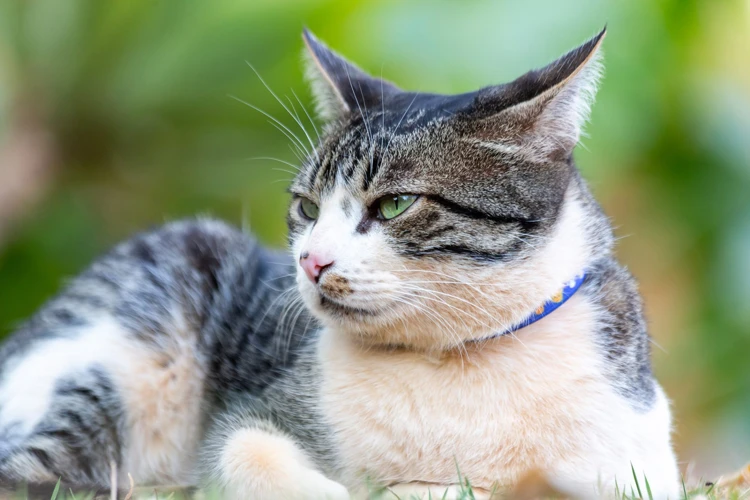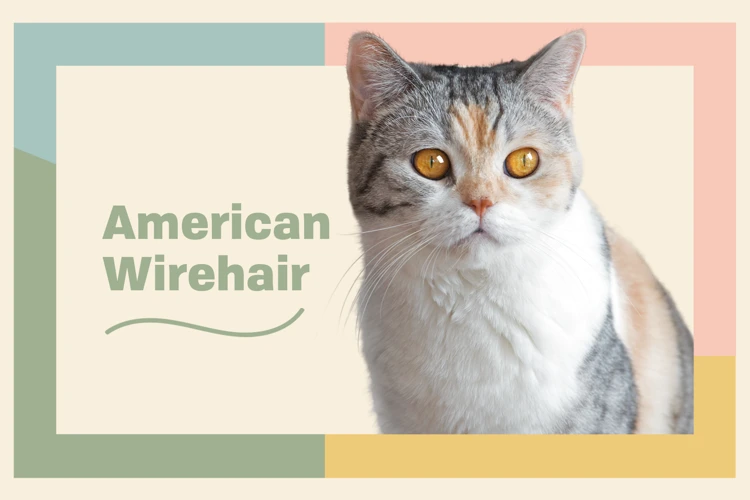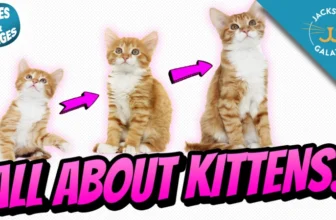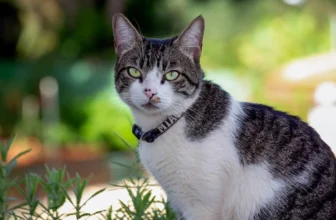Have you ever wondered why some American Wirehair cats have different coat colors than others? Perhaps you’ve noticed that certain colors seem more prevalent than others, or maybe you’re a breeder yourself and want to understand the genetics behind this fascinating aspect of feline breeding. Whatever your interest, this article will provide an in-depth look at the predominant coat colors in American Wirehair breeding. We’ll explore the role of genetics and breed standards, examine the most popular colors, and discuss how breeding techniques can affect coat color outcomes. So prepare to dive into the world of American Wirehair coat colors and discover all there is to know!
Understanding Coat Colors in American Wirehair Cats

Understanding the coat colors of American Wirehair cats can seem confusing and overwhelming. But it is important for cat lovers, breeders, and owners to be familiar with them in order to appreciate these unique and lovable felines. From genetics to breed standards and popular coat colors, understanding coat colors in American Wirehair cats is the key to successful breeding and cat ownership. So, let’s delve into this fascinating topic and learn more about the coat colors of American Wirehair cats. For more on American Wirehair genetics, follow this link.
The Genetics of Coat Color
Understanding the genetics of coat color is crucial for breeders to produce desired coat colors in their American Wirehair breeding programs. Coat color genes are carried on the DNA molecule, which determines the pigmentation of the cat’s fur.
In total, three pigment types contribute to cats’ coat colors. The genes that cats inherit from their parents determine the distribution and amount of pigmentation.
One of the main pigments influencing coat color is eumelanin. The eumelanin pigment creates shades ranging from black to brown depending on the quantity. A dominant gene produces eumelanin pigment in cats. When a cat receives two copies of this gene, it produces a black coat.
The alternate pigment for coat color is called pheomelanin, creating red and cream-coated cats. The genes for creating this pigment have incomplete dominance in cats. A homozygous cat with two copies of genes that create pheomelanin will be red, while a heterozygous cat with only one copy will be a shaded or lighter red.
Another pigment that could impact coat colors is called dilute. Dilution fades the eumelanin pigment to blue or the pheomelanin pigment to cream. The dilute gene is incomplete in its dominance and shows a lighter effect on homozygous cats.
Table – Coat Color and Possible Genotypes
| Coat Color | Pigments present | Possible Genotypes |
|---|---|---|
| Black | Eumelanin | BB, Bb |
| Blue (dilute black) | Diluted eumelanin | bb |
| Red (ginger) | Pheomelanin | OO |
| Cream | Diluted pheomelanin | oo |
| Calico (black, white, orange) | Two X chromosomes | XY |
Breeding for specific coat colors is a challenging and time-consuming process and requires an understanding of possible genotypes. Selecting the right breeding pair can increase the probability of obtaining the desired coat color and cat phenotype. Nonetheless, genetic diversity and responsible breeding practices should always be considered. To learn more about responsible breeding practices, visit responsible-breeding-american-wirehairs.
The Role of Breed Standards
Breed standards are a set of guidelines that are established by the Cat Fanciers’ Association (CFA) to determine the ideal physical characteristics, temperament, and coat type of American Wirehair cats. These standards play a crucial role in American Wirehair breeding as they help to ensure that the cats being bred conform to the desired traits and characteristics of the breed.
The Importance of Breed Standards:
The CFA breed standards help to promote uniformity in American Wirehair cats and maintain their unique characteristics. These standards outline the ideal features of the breed, including body type, head and ear shape, eye color, and of course, coat color.
Here are a few key points to understand about the role of breed standards in American Wirehair breeding:
- Breed standards outline the desired physical and temperamental traits for the American Wirehair breed.
- The standards establish guidelines for judging cat shows and competitions.
- The standards provide a reference for breeders to determine which cats to breed and which ones to avoid.
- Breed standards help to preserve the breed’s distinctive characteristics and promote responsible breeding practices.
The Relationship Between Coat Color and Breed Standards:
Coat colors play an important role in American Wirehair breed standards, as the ideal coat color can vary depending on the breed’s established guidelines. For example, the CFA accepts American Wirehairs in a variety of coat colors, but the breed standard calls for cats with a coat that is “crisp and resilient, not too long, and with a dense undercoat.”
The CFA also notes that American Wirehair cats with a white coat should have blue or odd-eyes. Black and white American Wirehair cats should have pure white, round, and well-opened eyes, while those with any other color coat should have large, expressive eyes that are the same color as the coat.
Breed standards serve as an important guideline for American Wirehair breeding practices and are a key component in maintaining the breed’s unique characteristics. By understanding the breed standards, breeders can select breeding pairs that conform to the desired traits and promote healthy and successful breeding outcomes.
If you are planning to breed American Wirehairs, it is essential to have a thorough understanding of the breed standards. You can learn more about the breed standards and breeding guidelines by visiting reputable online resources or speaking with experienced breeders.
Popular Coat Colors
When it comes to popular coat colors of American Wirehair cats, several patterns come to mind. The most common coat color is the brown tabby with black stripes and golden or brown background, followed by the black and white tuxedo pattern.
Other popular coat colors include solid colors like blue (gray) and silver, calico, and tortoiseshell. Calico and tortoiseshell American Wirehairs usually have a combination of white, black, and orange patches. The orange patches can sometimes appear more red, making the cat look like a flame point.
Red and cream American Wirehairs are a beautiful rarity. Their coloring ranges from an intense orange to a light, almost peachy color. When it comes to tabby cats, there are also various options to choose from. American Wirehairs can have classic tabby patterns that look like marbled swirls, or mackerel tabby patterns that resemble thin stripes.
The choice of coat color comes down to personal preference. However, it’s important to note that coat color genetics play a significant role in breeding. Breeders must carefully select breeding pairs to ensure the continuation and consistency of the desired coat color. Cat breeders must also pay special attention to breeding diseases and genetic defects to promote the health and well-being of the breed.
Predominant Colors in American Wirehair Breeding

As American Wirehair cats continue to increase in popularity, breeders are working to perfect the breed’s unique wirehair coat. Understanding the various coat colors is a crucial part of American Wirehair breeding as it allows breeders to produce cats that meet the necessary breed standards. While there are several coat color variations, some are more predominant in American Wirehair breeding than others. Let’s take a closer look at some of the most common American Wirehair coat colors and how they are bred.
Black and White
When it comes to coat colors in American Wirehair breeding, the black and white combination is a classic. This color combination has always been a popular choice for cat lovers. Black and white cats are often called “tuxedo” cats due to their striking resemblance to a man’s formal evening attire.
Black: A solid black coat is caused by a dominant gene that suppresses other colors. This color gene is called “B” and can be paired with other genes to create different coat patterns. A pure black American Wirehair cat will have a coat that is rich and velvety, with no other color present.
White: White is caused by a recessive gene that masks other colors. This gene is called “w” and must be present in both parents to produce a white offspring. Some white cats may have spots or stripes that are difficult to see due to their light coloring.
Black and White: A classic coat color combination, black and white cats have a solid black coat with white markings on the face, chest, belly, and paws. The white areas are caused by the “white spotting” gene. This gene comes in varying strengths and can create a range of patterns from a small white mark on the chest to a completely white coat with just a few patches of black.
It’s important to note that black and white American Wirehair cats are not just great in appearance but also have different personalities from other colors. Many black and white American Wirehair cat owners report that their cats are more affectionate and outgoing compared to other colors.
Black and white American Wirehair cats are a striking and classic color combination, highly desirable in breeding programs. They are friendly, full of personality and certainly an excellent addition to any family. If you are considering American Wirehair breeding, black and white color combination is a great place to start.
Tabby
Tabby patterns are a favorite among American Wirehair enthusiasts. These patterns can range from classic to mackerel to spotted, and come in a variety of colors. The tabby pattern is easily recognizable with its thin lines that resemble the letter M on the forehead.
When breeding for tabby American Wirehair cats, there are a few things to keep in mind. Firstly, determining the color of the tabby coat is important. Some of the most popular tabby coat colors include brown, gray, and orange. It’s also worth noting that female American Wirehairs are more likely to have the tabby pattern than males.
Here’s a breakdown of the different tabby patterns and colors:
| Tabby Pattern | Description | Color Example |
|---|---|---|
| Classic | Bold, swirling marbled pattern | Red Classic Tabby |
| Mackerel | Narrow, vertical stripes | Gray Mackerel Tabby |
| Spotted | Round or oval spots on the coat | Brown Spotted Tabby |
When breeding for tabby American Wirehair cats, it’s important to consider the genetics of both parents. If both parents are tabby, there is a higher chance that the kittens will inherit the tabby pattern. However, if one parent is solid colored, there is still a chance that the kittens will inherit the tabby pattern.
It’s also important for breeders to remember that while tabby American Wirehairs are popular, it’s equally important to prioritize the health and well-being of the cats during breeding. By following responsible breeding practices such as genetic testing and proper care during pregnancy, breeders can ensure the success and health of their litters.
If you want to learn more about successful breeding techniques for American Wirehair cats, visit this helpful guide. Additionally, if you’re a wirehair breeder looking for tips on how to care for your cats during pregnancy, check out this comprehensive guide.
Solid Blues and Silvers
Solid Blues and Silvers are popular coat colors in American Wirehair breeding. These colors are produced by recessive genes that are carried from generation to generation. The process of breeding for these colors is complex and requires a lot of patience and careful selection.
Blue Coat Color: The Blue coat color in American Wirehair cats is a solid, slate-blue color. This color is produced by a dilution gene that lightens the black color present in the cat’s fur. The blue coat is a popular color choice in cat shows and is highly sought after by breeders. However, breeding for this color can be challenging, as it requires careful selection of parent cats to ensure that the recessive gene is passed down to the next generation.
Silver Coat Color: The Silver coat color is produced by a different recessive gene. The fur of a Silver American Wirehair appears gray/silver, with a distinctive sheen that is highly prized by breeders. The process of breeding for Silver American Wirehairs can take several generations, as it requires careful selection of parent cats who carry the recessive gene responsible for the color.
To breed for Solid Blues and Silvers, breeders need to carefully select parent cats who carry the correct genes. They can use pedigree charts and genetic testing to help identify cats who are more likely to produce the desired color. Once the parent cats are selected, breeders need to follow a strict breeding program to ensure that the recessive gene is passed down to the next generation.
Table: Popular Solid Blues and Silvers
| Color | Description |
|---|---|
| Blue | A solid, slate-blue color produced by a dilution gene that lightens the black color in the fur |
| Silver | Gray/silver fur with a distinctive sheen produced by a different recessive gene |
If you’re a breeder interested in producing Solid Blues or Silvers, it’s essential to work with a reputable breeder who has experience producing these colors. They can provide valuable advice and guidance on breeding techniques and help ensure that the cats produced are healthy and meet the breed standards.
For more tips on American Wirehair breeding, you may check our article Wirehair Breeder Tips.
Calico and Tortoiseshell
Calico and tortoiseshell coat colors are two of the most strikingly beautiful and unique coat colors found in American Wirehair cats. These coat colors are known for their distinctive patterns and blends of colors, resulting in a coat that appears to be a work of art.
Calico Cats have a predominantly white coat with patches of black and orange dispersed throughout their fur. The colors are arranged randomly, creating a unique and visually appealing coat. The genes responsible for Calico coloring are linked to the X chromosome, making Calico cats usually female.
Tortoiseshell Cats, on the other hand, have coats that feature a blend of black, orange, and brown colors with no white patches. While tortoiseshell cats have a similar color pattern to calico cats, they do not have white patches. This coat color is typically found in female cats, but male cats with this color are extremely rare. The genes responsible for Tortoiseshell coloring are also linked to the X chromosome.
Interestingly, Calico and Tortoiseshell cats are never the result of intentional breeding for these colors. Instead, they are both the result of a genetic phenomenon called “random X-inactivation.” This means that one X chromosome in each cell of a female cat is randomly inactivated, resulting in the patchy coat colors of Calico and Tortoiseshell cats.
It is important to note that while these coat colors are stunning, American Wirehair breeders should never intentionally breed for them above other traits. Instead, the focus should be on breeding healthy cats with good temperament and strong breed characteristics. Responsible breeding practices should always take precedent to ensure the health and well-being of the cats.
Reds and Creams
Reds and creams are two of the most popular coat colors found in American Wirehair breeding. These colors are highly sought after by cat enthusiasts for their beauty and unique characteristics.
Red: The red coat color is caused by a gene called O. This gene produces a pigment called phaeomelanin, which is responsible for the red coloration of the hair. The intensity of the red color can vary from a deep, rich red to a lighter, more orange tone. It is not uncommon to find variations of red in American Wirehair cats, such as tabby patterns or white spotting.
Cream: The cream coat color is caused by a combination of genes. These genes dilute the phaeomelanin pigment, resulting in a pale cream color. Cream cats often have a pinkish nose and paw pads, which add to their unique appearance. Cream is considered a dilute form of red, and therefore, cream cats can also exhibit tabby patterns or white spotting.
While both red and cream cats are highly desired by cat lovers, breeders must carefully consider the genetic makeup of their breeding pairs to ensure healthy progeny. Matings between two red or two cream cats can result in a litter of kittens with a higher risk of health problems, such as deafness. Responsible breeding practices must always be followed to ensure the health and well-being of the cats.
It is important to note that coat color should not be the sole criterion when selecting a cat. The cat’s temperament, health, and other important factors must also be taken into consideration. As with any breeding program, the welfare of the cats should be the top priority.
How Coat Colors are Bred
Breeding coat colors in American Wirehair cats can be a complex process. Pride and passion for the breed can motivate breeders to create cats with unique coat colors. However, it’s important to approach breeding with knowledge and responsibility, ensuring that the health and well-being of the cats always come first. In this section, we’ll explore the different methods used to breed coat colors in American Wirehair cats, including outcrossing, breeding for specialized colors, and the importance of responsible breeding practices.
Outcrossing
Outcrossing is a term used to describe the breeding of American Wirehair cats with cats of other breeds to introduce new genetic material. This is done to improve the health and appearance of the breed, as well as to introduce new coat colors and patterns.
Advantages of Outcrossing
Outcrossing can help in reducing the risk of genetic disorders in the breed. It can add genetic diversity to the breed, which can be beneficial for the overall health of the breed. It also enables breeders to maintain or improve the breed’s characteristics to ensure its longevity.
Disadvantages of Outcrossing
While outcrossing can bring beneficial genetic diversity to the breed, it also poses the risk of introducing genetic disorders from the new breed. It can also lead to the loss of desired traits in the breed.
Outcrossing in American Wirehair Breeding
In American Wirehair breeding, outcrossing is usually done with shorthair breeds, such as the American Shorthair and the Domestic Shorthair, to introduce new coat colors and patterns. Outcrossing is also done occasionally to introduce new traits that the breed doesn’t possess.
The table below shows some of the popular breeds used for outcrossing in American Wirehair breeding:
| Breed | Description |
|---|---|
| American Shorthair | A medium to large-sized cat with a short, thick coat that comes in a wide variety of colors and patterns. |
| Domestic Shorthair | A mixed breed with a short coat that comes in various colors and patterns. |
| British Shorthair | A medium to large-sized cat with a short, plush coat that comes in a variety of colors and patterns, including blue, black, white, red, cream, and silver. |
| Persian | A medium to large-sized cat with a long, thick coat that comes in a variety of colors and patterns. |
Outcrossing Control
To ensure that the outcrossing process is done responsibly and safely, breeders should seek the consultation of veterinary geneticists, and only use registered cats that have been tested for genetic disorders. The breed standard should be kept in mind to ensure that fundamental characteristics of the breed are maintained. This should be taken in context of importance of responsible breeding in American Wirehair cats, that enable breeders to maintain the breed’s characteristics and prevent genetic disorders from being passed down.
Breeding for Specialized Colors
Breeding for specialized colors in American Wirehair cats involves a great deal of genetic knowledge and expertise. Breeders often spend years perfecting their skills to ensure they can produce the desired coat colors in their kittens.
Factors Considered in Breeding for Specialized Colors
When breeding for specialized colors, breeders take into account multiple factors, such as the genetics of the parents, the desired color and pattern, and whether the cat will fit with breed standards.
The Importance of Pedigree Analysis
To breed for specialized colors, pedigree analysis is crucial, as it helps breeders evaluate the compatibility of their cats and assess the likelihood of reproducing the desired traits. Having a thorough understanding of the genetic makeup of their breeding cats is key to predicting the possible outcomes of a breeding program.
Color and Pattern Considerations
Specialized coat colors can include anything from chocolate points to shaded silvers. It’s important for breeders to know the genetic makeup of their cats to ensure they can produce the desired colors and patterns in their litters. For example, breeding two cats together with the dilute gene can result in blue or cream-colored kittens.
Careful Selection of Breeding Cats
To produce specialized colors, breeders must carefully select their breeding cats, keeping in mind the colors and patterns they want to produce. Breeders may also look at cats with unique features like freckles on their nose or a unique coat texture to add an extra level of uniqueness to their litters.
The Importance of Ethical Breeding
It’s crucial for breeders to prioritize responsible and ethical breeding practices when breeding for specialized colors. This not only ensures the health and well-being of the cats but also maintains the integrity of the breed. By carefully selecting breeding cats based on temperament, health, and genetic makeup, breeders can create a line of cats that adheres to breed standards, while also producing the desired coat colors.
The Importance of Responsible Breeding
As with any breeding program, responsible breeding is essential in maintaining the health and quality of American Wirehair cats. This is especially important in terms of maintaining the desired coat colors. Breeders should be aware of genetic issues that may arise from inbreeding, and practices such as outcrossing can help prevent these issues.
Outcrossing: One way to prevent genetic issues is to outcross cats with different pedigrees. This means breeding cats that are not closely related to each other, in order to diversify the gene pool. It can be tempting for breeders to repeatedly breed from a small pool of cats in order to preserve desirable traits, but this can lead to genetic problems such as inbreeding depression. Outcrossing can help to eliminate these problems and increase the overall health of the breed.
| Pros of Outcrossing | Cons of Outcrossing |
|---|---|
| Diversifies Gene Pool | Potentially introduces unwanted traits |
| Can improve overall health of the breed | May be more difficult to find appropriate outcrosses |
| Prevents genetic issues such as inbreeding depression | Offspring may not meet breed standards for appearance or temperament |
Breeding for Specialized Colors: While it may be tempting for breeders to focus exclusively on producing cats with certain coat colors, this can lead to issues such as genetic abnormalities and health problems. Breeders should strive to maintain standards for appearance and temperament alongside breed-specific coat color traits. It is important to remember that the health and well-being of the breed should always come first.
The Importance of Responsible Breeding: Ultimately, responsible breeding is essential in maintaining the health, appearance, and quality of the American Wirehair breed. As a prospective owner, it is important to work with a breeder who is committed to ethical breeding practices and the overall well-being of the breed. This may include breeders who prioritize genetic diversity and work to prevent inbreeding, as well as those who prioritize the health and temperament of cats over their appearance. By working with responsible breeders and supporting ethical breeding practices, we can help ensure that the American Wirehair breed remains healthy and vibrant for generations to come.
Conclusion
In conclusion, the coat color of the American Wirehair cat is an essential factor in breeding. While there are many colors and patterns available, breeders must adhere to strict standards to ensure the quality and health of their cats.
Understanding the genetics of coat colors is crucial to producing the desired coat colors in American Wirehair breeding. It requires an understanding of dominant and recessive genes and the ways they interact during breeding.
Breed standards play a critical role in determining the acceptable coat colors for American Wirehair cats. These standards ensure that the cats adhere to a specific look and maintain the breed’s integrity.
Different coat colors have their popularity among American Wirehair enthusiasts. From the classic black and white and tabby to the striking silvers and blues, each color has its charm and appeal.
Predominant colors in American Wirehair breeding include black and white, tabby, solid blues and silvers, calico, and tortoiseshell, and reds and creams. Breeders focus on producing cats that meet breed standards while also incorporating desirable coat colors.
To achieve specific coat colors, breeders use various breeding techniques such as outcrossing and specialized breeding. However, responsible breeding is crucial to ensuring the breed’s health and preserving desirable traits.
In conclusion, the coat color is a vital factor in American Wirehair breeding. It’s a result of careful genetics, adherence to breed standards, and a focus on desirable colors. By employing responsible breeding techniques, breeders ensure the health and integrity of the breed while celebrating the beauty of their unique and stunning coat colors.
Frequently Asked Questions
1. What is the most common coat color for American Wirehair cats?
The most common coat color for American Wirehair cats is black and white.
2. Are solid colored American Wirehair cats rare?
While not as common as black and white or tabby, solid colored American Wirehair cats are not necessarily considered rare.
3. Can American Wirehair cats have pointed coats like Siamese cats?
No, American Wirehair cats do not have pointed coats like Siamese cats as it is not a recognized coat color or pattern according to breed standards.
4. Is coat color an indication of a cat’s personality or behavior?
No, coat color is not an indication of a cat’s personality or behavior. A cat’s behavior and personality are determined by a variety of factors.
5. How do breeders produce specialized coat colors in American Wirehair cats?
Breeders produce specialized coat colors in American Wirehair cats through breeding programs that focus on selecting for desired traits and colors.
6. What is outcrossing and how does it affect coat color in American Wirehair cats?
Outcrossing is the breeding of two cats from different breeds or bloodlines. It can introduce new coat colors and patterns to the American Wirehair breed.
7. Are calico and tortoiseshell cats the same?
No, calico and tortoiseshell cats are not the same. Calico cats are typically white, black, and orange while tortoiseshell cats have a mix of black and orange fur.
8. Can American Wirehair cats have more than one coat color?
Yes, American Wirehair cats can have more than one coat color. This is common in calico and tortoiseshell patterns.
9. Are blue and silver American Wirehair cats popular?
Blue and silver American Wirehair cats are less common than black and white or tabby, but they are still popular among breed enthusiasts.
10. Is it important to practice responsible breeding when it comes to coat colors in American Wirehair cats?
Yes, it is important to practice responsible breeding when it comes to coat colors in American Wirehair cats. This ensures the health and well-being of the cats and helps maintain breed standards.







